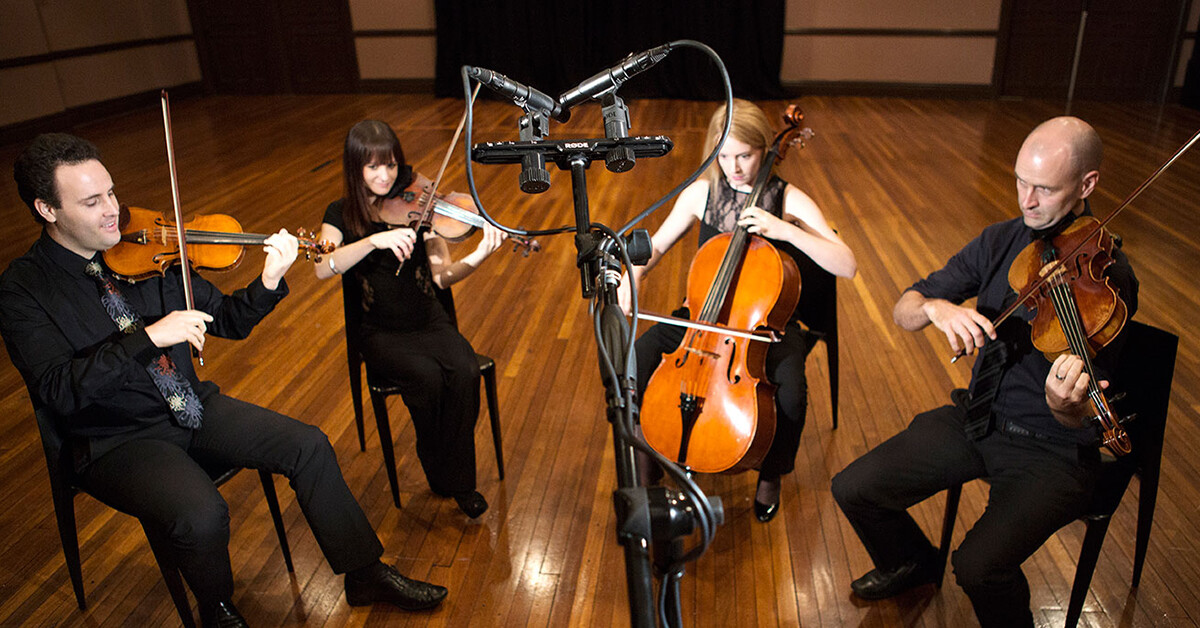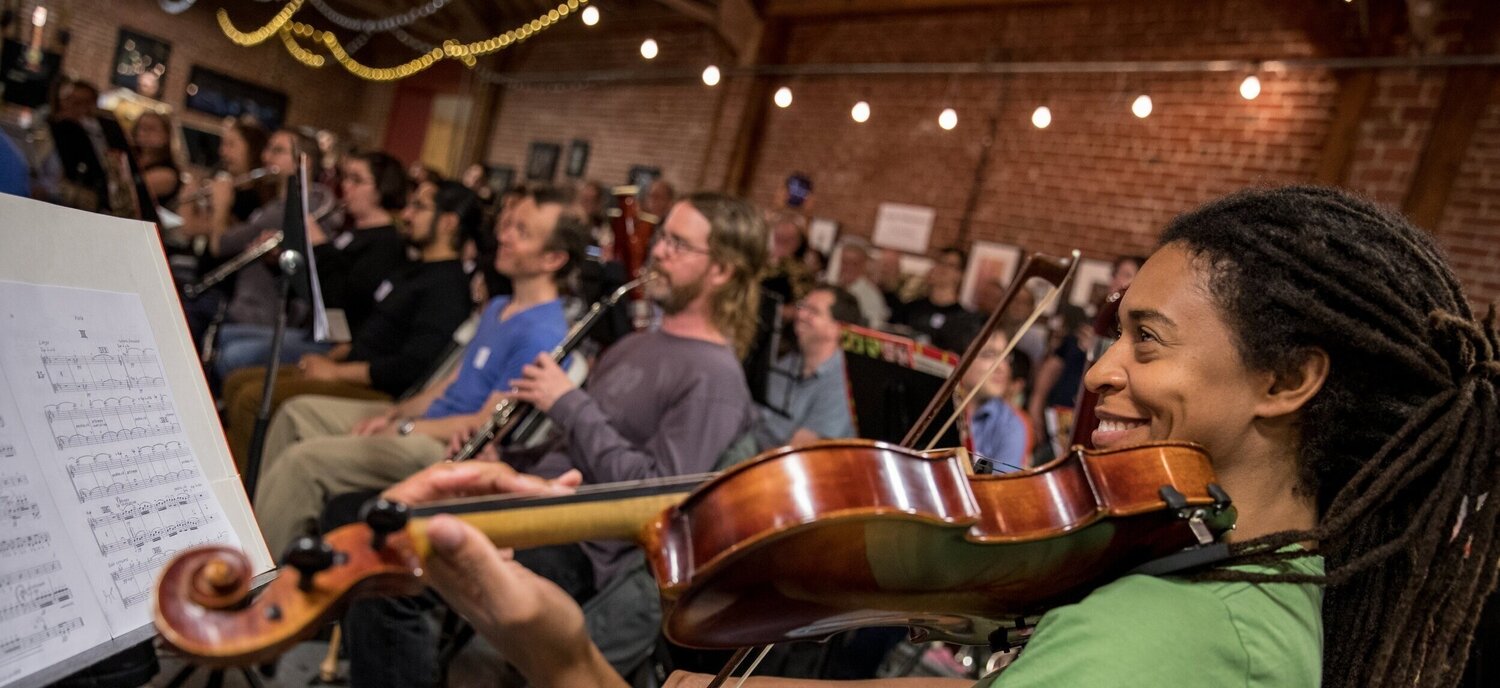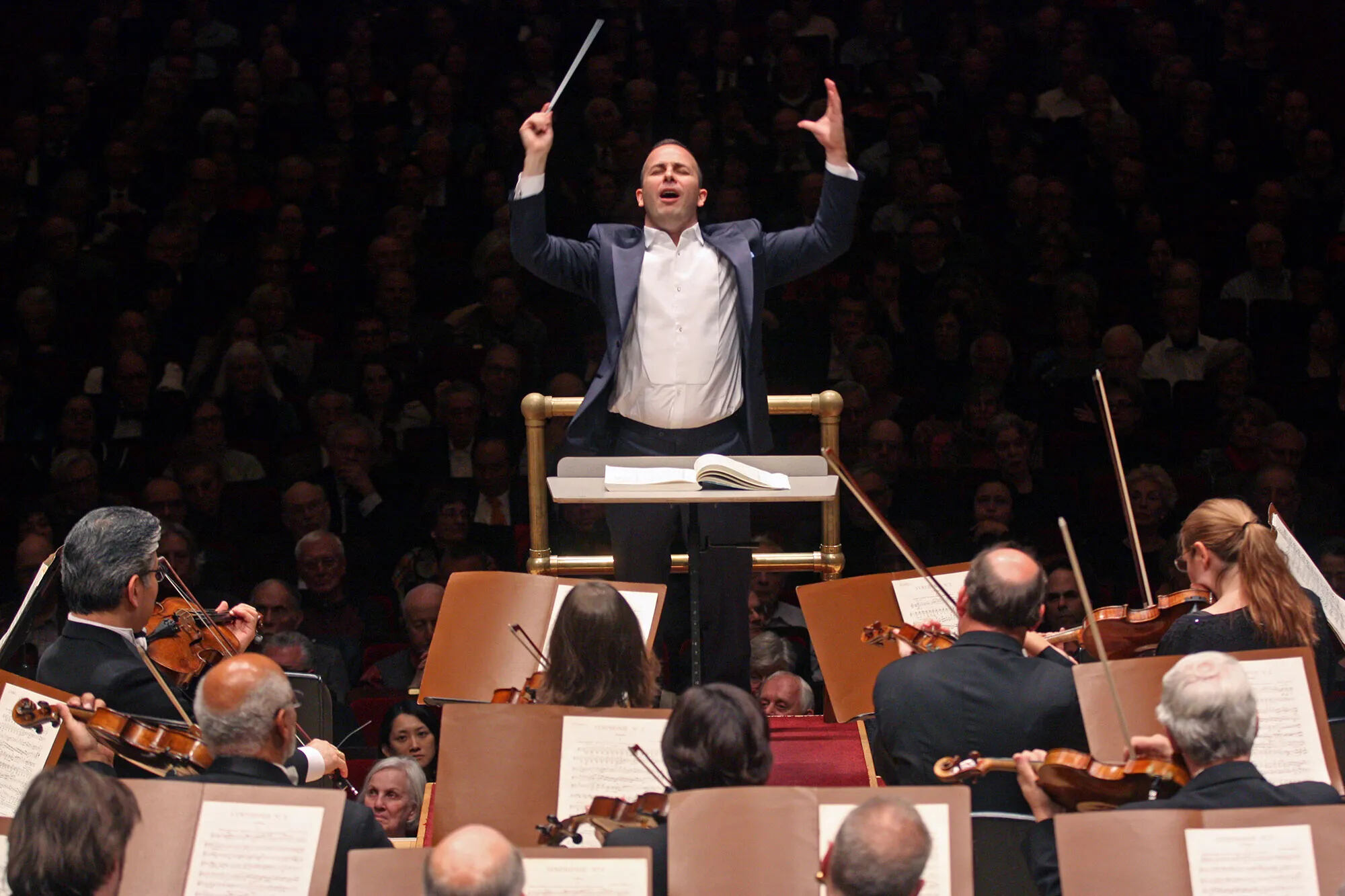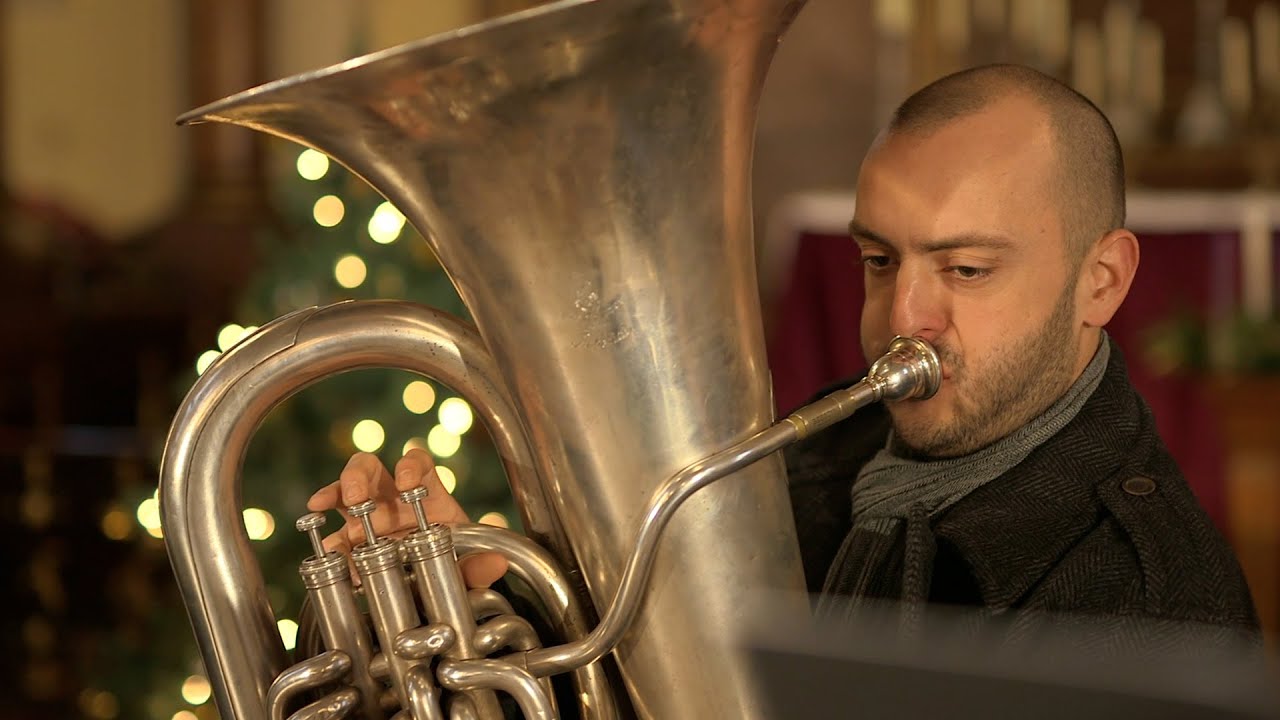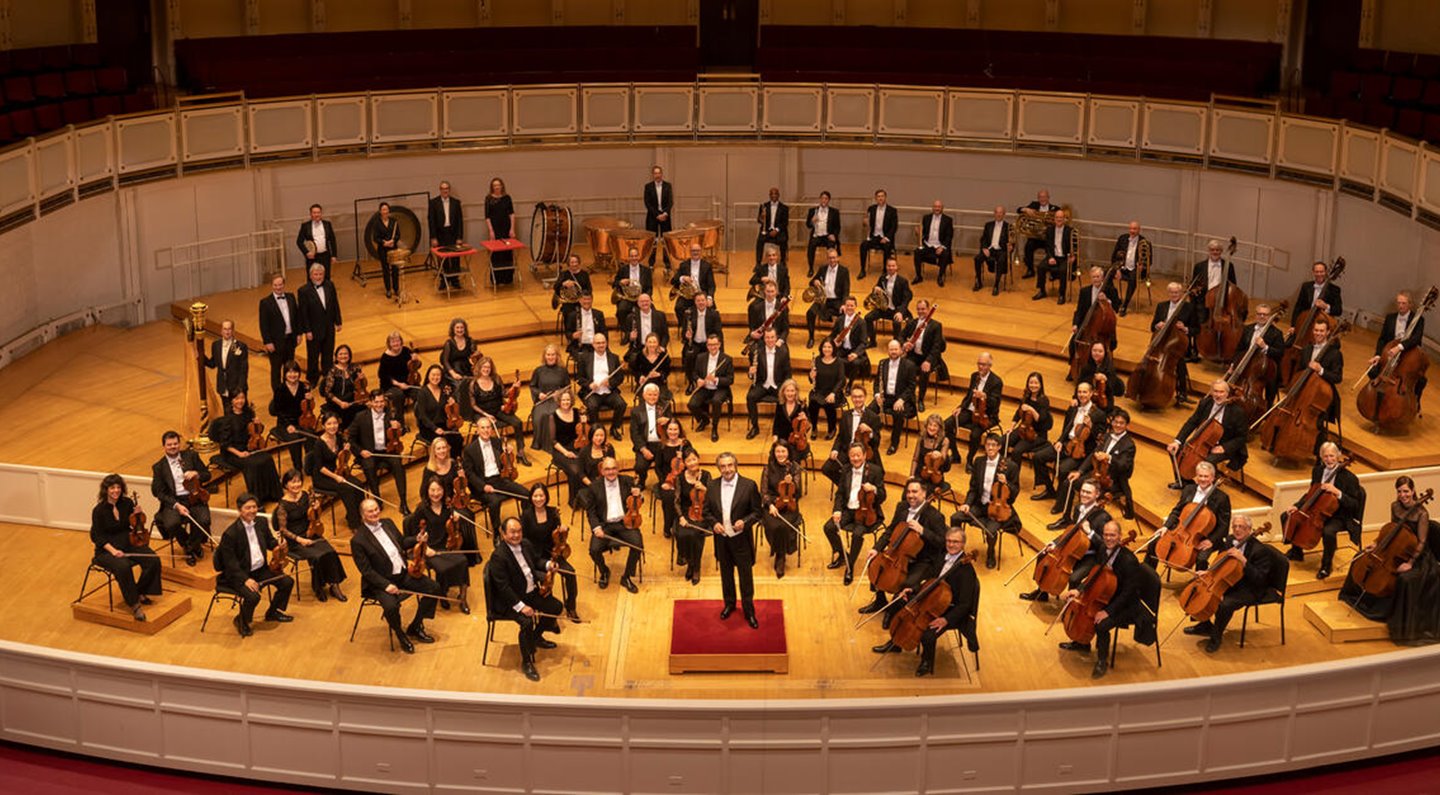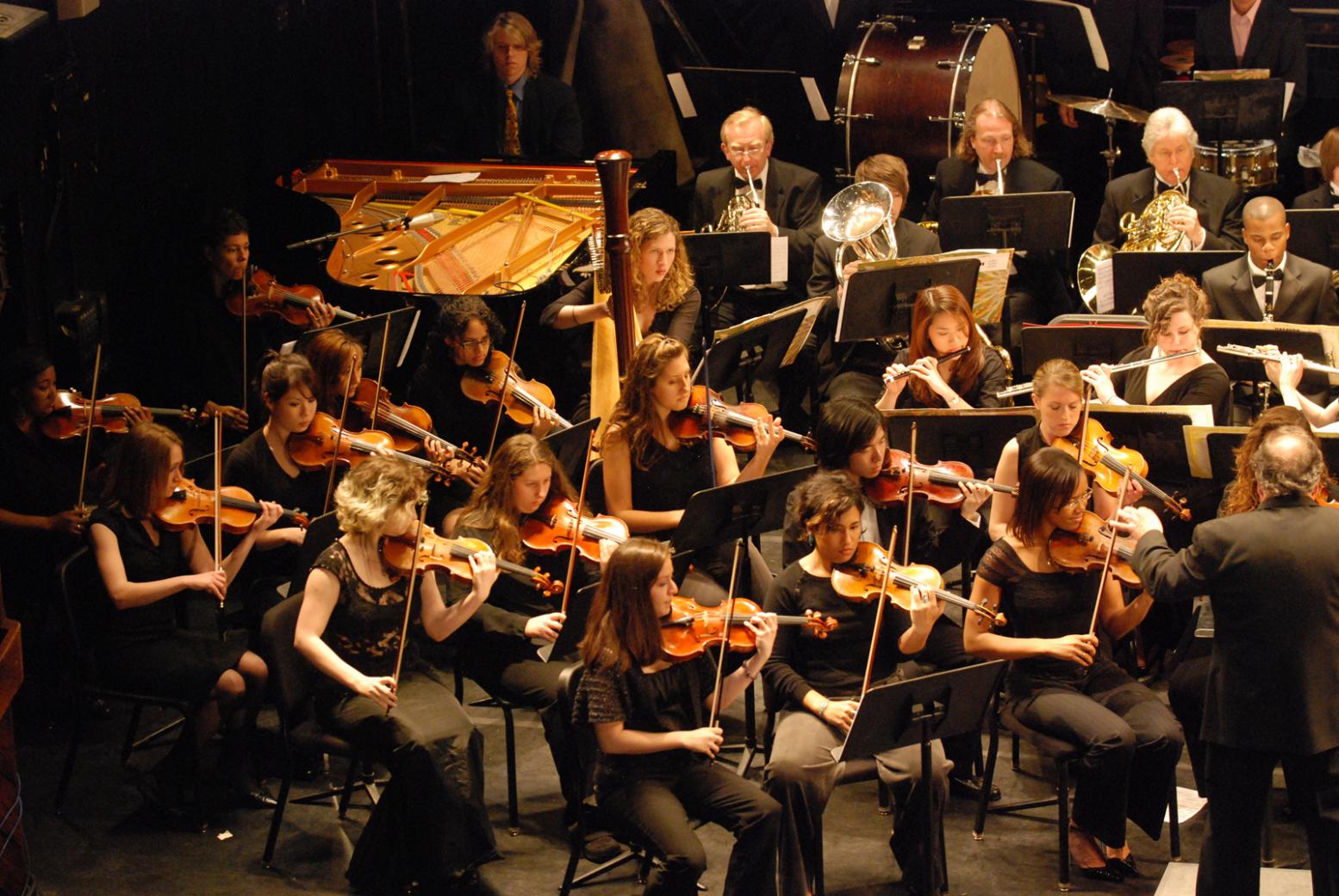Home>Production & Technology>Orchestra>How To Ace An Orchestra Audition
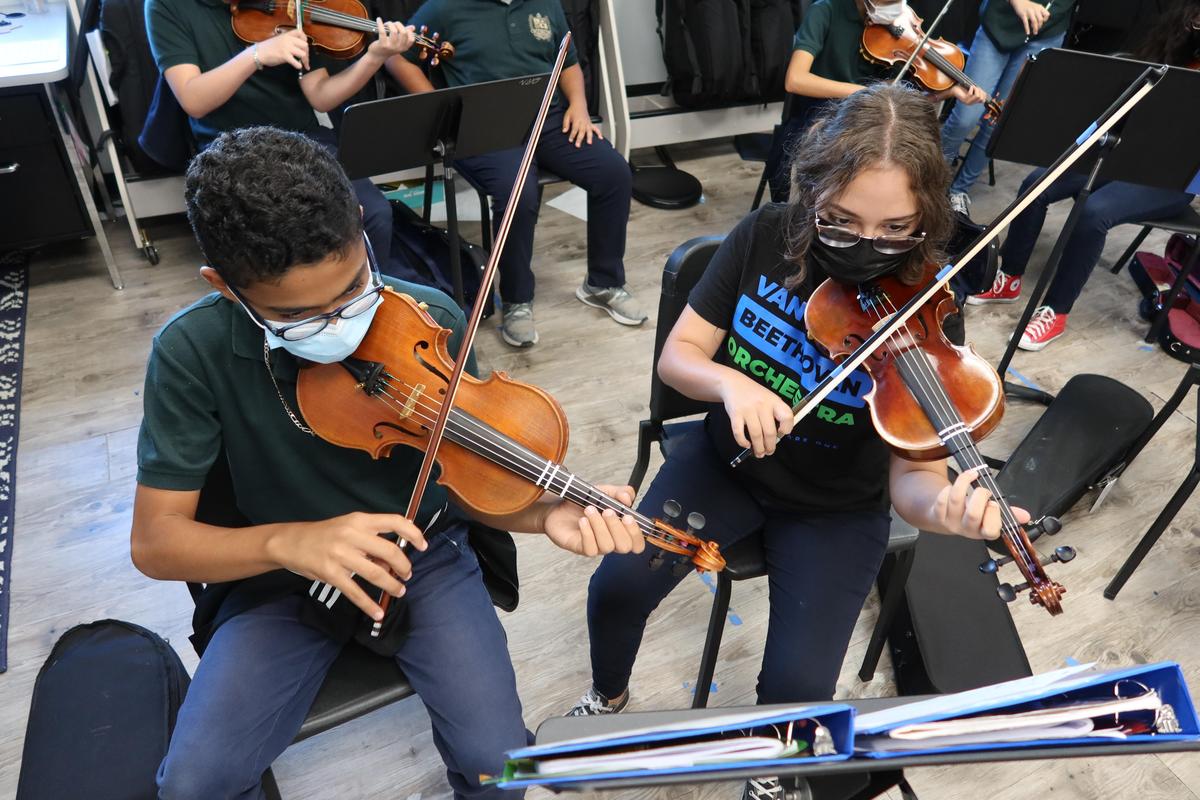

Orchestra
How To Ace An Orchestra Audition
Published: February 25, 2024
Learn how to prepare for and excel in your orchestra audition with our expert tips and strategies. Master the art of auditioning and stand out in the competitive orchestra world.
(Many of the links in this article redirect to a specific reviewed product. Your purchase of these products through affiliate links helps to generate commission for AudioLover.com, at no extra cost. Learn more)
Table of Contents
Introduction
Preparing for an orchestra audition is a thrilling yet challenging endeavor that demands dedication, precision, and a deep understanding of musical artistry. Whether you are a seasoned musician or a budding talent, the audition process can be both exhilarating and nerve-wracking. It requires a harmonious blend of technical mastery, expressive interpretation, and mental fortitude. As you embark on this journey, it's essential to embrace the opportunity to showcase your musical prowess while continuously refining your skills.
In the following sections, we will delve into the intricacies of preparing for an orchestra audition, offering valuable insights and practical tips to help you navigate this enriching experience. From deciphering the audition requirements to selecting and refining your repertoire, honing your practicing techniques, and fortifying your mental and physical readiness, we will explore the holistic approach to acing an orchestra audition.
The audition process is not merely a test of musical proficiency; it is a platform for self-expression, artistry, and personal growth. Each note played and every moment of silence carries the potential to captivate the audience and the adjudicators, conveying a narrative that transcends technical precision. It is a chance to communicate your passion for music and connect with others through the universal language of melody and harmony.
As you immerse yourself in the intricacies of audition preparation, remember that every practice session, every musical passage mastered, and every moment of self-reflection contributes to your growth as a musician. Embrace the journey with an open heart and a steadfast determination to unleash your musical brilliance. With each step, you are not only preparing for an audition but also nurturing your artistic soul, enriching your musicality, and embracing the transformative power of music.
Throughout this guide, we will unravel the multifaceted aspects of preparing for an orchestra audition, equipping you with the knowledge and confidence to showcase your musical prowess and leave a lasting impression. Let's embark on this musical odyssey together, as we unravel the art and science of preparing for an orchestra audition.
Understanding the Requirements
Before embarking on the journey of preparing for an orchestra audition, it is imperative to gain a comprehensive understanding of the audition requirements. Each orchestra may have specific guidelines and expectations, ranging from the choice of repertoire to the technical skills and musical styles that are assessed. By meticulously dissecting the audition criteria, you can tailor your preparation to align with the expectations of the adjudicators, thereby maximizing your chances of success.
One of the fundamental aspects of comprehending the requirements is to meticulously review the audition repertoire. This entails understanding the prescribed musical pieces, their stylistic nuances, and the technical demands they impose. By delving into the intricacies of the repertoire, you can discern the expressive elements, dynamic contrasts, and interpretive nuances that are integral to delivering a captivating performance.
Furthermore, it is crucial to grasp the technical benchmarks that underpin the audition process. This encompasses proficiency in scales, sight-reading abilities, and orchestral excerpts, which are often pivotal components of the audition. By honing these technical skills, you can exhibit a well-rounded musical aptitude that resonates with the expectations of the adjudicators.
In addition to the musical and technical facets, understanding the ensemble's musical style and ethos is paramount. Each orchestra possesses a unique musical identity, characterized by specific interpretive approaches, tonal aesthetics, and historical perspectives. By immersing yourself in the orchestra's repertoire and historical performances, you can gain insights into their artistic ethos, thereby tailoring your preparation to harmonize with the ensemble's musical vision.
Moreover, familiarizing yourself with the audition process and its logistical aspects, such as the audition venue, panel composition, and time constraints, can alleviate uncertainties and instill a sense of preparedness. By embracing a holistic understanding of the audition requirements, you can approach your preparation with clarity, purpose, and a nuanced awareness of the expectations that await you.
In essence, comprehending the requirements of an orchestra audition transcends a mere perusal of the prescribed repertoire; it entails a profound immersion into the musical essence of the ensemble, the technical benchmarks, and the logistical intricacies. By assimilating these multifaceted aspects, you can embark on your preparation journey with an informed perspective, poised to showcase your musical prowess with finesse and artistry.
Selecting and Preparing Audition Repertoire
Selecting and preparing audition repertoire is a pivotal phase in the journey of preparing for an orchestra audition. It involves a meticulous process of discernment, exploration, and refinement, encapsulating the essence of musical artistry and technical proficiency. The choice of repertoire serves as a canvas for showcasing your musical prowess, expressive depth, and interpretive acumen, thereby warranting thoughtful consideration and strategic preparation.
When embarking on the selection of audition repertoire, it is imperative to strike a harmonious balance between showcasing your technical prowess and conveying your artistic sensibilities. This entails choosing pieces that not only demonstrate your virtuosity and command over the instrument but also resonate with your musical identity and expressive inclinations. By aligning the chosen repertoire with your artistic persona, you can imbue your performance with authenticity, emotional resonance, and a compelling narrative that captivates the adjudicators and the audience.
Furthermore, the selection of repertoire should encompass a diverse array of musical styles, epochs, and technical challenges, thereby showcasing your versatility and adaptability as a musician. By incorporating contrasting musical genres, such as Baroque, Classical, Romantic, and Contemporary compositions, you can demonstrate your ability to navigate diverse stylistic landscapes with finesse and authenticity. Additionally, the chosen repertoire should encompass a spectrum of technical demands, encompassing intricate virtuosic passages, lyrical phrasing, dynamic contrasts, and expressive nuances, thereby showcasing the breadth of your technical prowess and interpretive acumen.
Once the repertoire is selected, the process of preparation unfolds with meticulous attention to detail, expressive exploration, and technical refinement. Each musical passage is meticulously dissected, delving into the historical context, stylistic attributes, and interpretive nuances that underpin the composition. By immersing yourself in the historical milieu and the composer's artistic intent, you can unravel the layers of musical expression, thereby infusing your performance with authenticity and historical context.
Moreover, the process of technical refinement entails honing intricate passages, mastering challenging intervals, and cultivating seamless transitions, thereby fortifying your technical command over the repertoire. Additionally, delving into the expressive nuances, dynamic contrasts, and tonal palette of each composition enables you to imbue your performance with emotional depth, interpretive finesse, and a compelling narrative that resonates with the audience and the adjudicators.
In essence, the process of selecting and preparing audition repertoire is a testament to the multifaceted nature of musical artistry. It demands a harmonious blend of technical mastery, expressive depth, and historical insight, thereby culminating in a performance that transcends mere virtuosity and resonates with emotional authenticity. As you embark on this journey, embrace the transformative power of music, and infuse your repertoire with a narrative that reflects your artistic persona, technical finesse, and unwavering passion for musical expression.
Practicing Techniques
Practicing for an orchestra audition necessitates a strategic and disciplined approach that encompasses technical precision, interpretive depth, and holistic musical refinement. It is a process that transcends mere repetition and delves into the realms of deliberate practice, expressive exploration, and mental fortitude. By adopting effective practicing techniques, you can cultivate a musical prowess that resonates with artistry, technical finesse, and unwavering confidence.
Deliberate Practice:
Engaging in deliberate practice involves a targeted and systematic approach to mastering musical passages. This entails isolating challenging sections, dissecting them into manageable fragments, and meticulously refining each component. By focusing on precision, accuracy, and expressive nuances, deliberate practice fosters a profound understanding of the musical intricacies, thereby fortifying your command over the repertoire.
Slow Practice:
Embracing slow practice as a cornerstone of your preparation allows for meticulous attention to detail, technical refinement, and expressive exploration. By navigating musical passages at a deliberate pace, you can unravel the nuances of phrasing, dynamic contrasts, and tonal shading, thereby cultivating a performance imbued with clarity, emotional depth, and interpretive finesse.
Metronome Utilization:
Incorporating the metronome as a practice tool facilitates rhythmic precision, tempo stability, and internalized pulse. By aligning your playing with the metronome's cadence, you can cultivate a sense of rhythmic dexterity, seamless tempo transitions, and a steadfast pulse, thereby fortifying the structural integrity of your performance.
Recording and Self-Evaluation:
Utilizing recording devices to capture practice sessions enables reflective self-evaluation, critical analysis, and iterative refinement. By revisiting recorded performances, you can discern areas for improvement, identify interpretive nuances, and cultivate a heightened sense of self-awareness, thereby fostering continual growth and refinement.
Mental Visualization:
Engaging in mental visualization techniques fosters a profound connection with the music, enabling you to internalize interpretive nuances, anticipate technical challenges, and cultivate a performance imbued with emotional depth and narrative coherence. By envisioning the musical narrative, tonal palette, and expressive nuances, you can transcend technical proficiency and imbue your performance with an evocative and compelling narrative.
In essence, practicing techniques encompass a holistic and disciplined approach that transcends mere repetition. It is a journey of deliberate refinement, expressive exploration, and unwavering dedication, culminating in a performance that resonates with artistry, technical finesse, and emotional authenticity. Embrace the transformative power of deliberate practice, slow refinement, metronome utilization, reflective self-evaluation, and mental visualization as pillars of your preparation, thereby cultivating a musical prowess that captivates the adjudicators and the audience with its emotive resonance and interpretive depth.
Mental and Physical Preparation
Mental and physical preparation are integral facets of readying oneself for an orchestra audition. Beyond technical proficiency and musical interpretation, the state of one's mind and body profoundly influences the quality of performance. This holistic approach encompasses mental fortitude, emotional resilience, and physical well-being, culminating in a poised and compelling presentation.
Mental Resilience:
Preparing mentally involves cultivating resilience, focus, and a positive mindset. Engaging in mindfulness practices, such as meditation and deep breathing exercises, fosters a sense of calm and centeredness, enabling one to navigate performance anxiety and self-doubt. By embracing a resilient mindset, musicians can approach the audition with confidence, poise, and an unwavering belief in their abilities.
Emotional Regulation:
Navigating the emotional landscape is paramount in preparing for an audition. Acknowledging and channeling emotions such as excitement, nervousness, and anticipation into expressive depth and artistic fervor empowers musicians to deliver performances imbued with authenticity and emotional resonance. Embracing emotional regulation techniques equips individuals to harness their emotional energy, infusing their playing with sincerity and depth of feeling.
Physical Well-being:
Physical preparation encompasses nurturing one's body through adequate rest, nutrition, and exercise. Prioritizing sufficient sleep and balanced nutrition fosters physical vitality, mental acuity, and sustained energy levels during practice and performance. Additionally, engaging in physical activities such as yoga, stretching, and cardiovascular exercises promotes muscular flexibility, relaxation, and overall physical well-being, enhancing one's readiness for the demands of an audition.
Visualization and Affirmations:
Mental preparation involves harnessing the power of visualization and positive affirmations. By visualizing successful performances, vividly imagining the auditory and sensory aspects of the audition, and affirming one's capabilities, musicians can cultivate a mindset primed for peak performance. This mental conditioning instills confidence, clarity of intention, and a sense of preparedness, thereby fostering a resilient and focused state of mind.
Self-care and Relaxation:
Incorporating self-care practices, such as engaging in hobbies, spending time with loved ones, and embracing moments of relaxation, nurtures emotional equilibrium and mental rejuvenation. Balancing rigorous practice with moments of leisure and rejuvenation fosters a holistic approach to preparation, safeguarding against burnout and cultivating a sense of emotional well-being that enriches the musical journey.
In essence, mental and physical preparation for an orchestra audition transcends technical proficiency, encompassing a holistic approach that nurtures mental resilience, emotional depth, physical vitality, and a poised mindset. By embracing this multifaceted preparation, musicians can navigate the audition process with confidence, authenticity, and a profound connection to their artistry, culminating in performances that resonate with emotional depth, interpretive finesse, and unwavering confidence.
Performance Tips
As the culmination of meticulous preparation approaches, it is essential to embrace performance tips that elevate your audition presentation to a captivating and compelling level. These invaluable insights encompass a blend of technical finesse, expressive depth, and psychological resilience, fortifying your ability to deliver a performance that resonates with artistry and emotional authenticity.
-
Stage Presence and Poise: Upon entering the audition space, exude confidence and poise, projecting a commanding stage presence. Embrace a poised posture, engage with the adjudicators through eye contact, and convey a sense of assurance that emanates from within.
-
Embrace Nervous Energy: Acknowledge and channel nervous energy into expressive depth and heightened focus. Embracing the inherent adrenaline rush as a catalyst for heightened performance can infuse your playing with an electrifying fervor and emotional resonance.
-
Dynamic Interpretation: Embrace dynamic interpretation, infusing your performance with nuanced phrasing, tonal shading, and expressive depth. Navigate the ebb and flow of the music with conviction, imbuing each note with emotive resonance and narrative coherence.
-
Adaptability and Resilience: Remain adaptable and resilient in the face of unexpected circumstances. Whether it's adjusting to the acoustics of the audition space or navigating unforeseen technical challenges, maintain composure and adaptability, thereby showcasing your ability to thrive amidst diverse performance environments.
-
Connect with the Music: Forge a profound connection with the music, transcending technical proficiency and delving into the emotional core of each composition. Infuse your performance with sincerity, depth of feeling, and a narrative that captivates the adjudicators and resonates with the audience.
-
Embrace Silence: Embrace moments of silence as poignant opportunities for expressive introspection. Allow the lingering resonance of each note to permeate the air, fostering a sense of anticipation and emotional depth that underscores the profound artistry of your performance.
-
Celebrate Artistic Individuality: Embrace your unique artistic individuality, infusing the performance with a personal narrative that reflects your musical identity and interpretive inclinations. Celebrate the nuances of your playing, expressing an authentic and compelling artistic persona.
-
Resonate with Confidence: Project unwavering confidence in your musical prowess, interpretive acumen, and technical command. Let each note resound with the assurance of a musician who is poised, prepared, and deeply connected to the essence of the music.
In essence, these performance tips serve as guiding beacons, illuminating the path to a captivating and compelling audition presentation. By embracing these insights, musicians can navigate the audition process with confidence, artistry, and a profound connection to their musical narrative, culminating in performances that resonate with emotional depth, interpretive finesse, and unwavering confidence.
Conclusion
As we draw the curtain on this comprehensive guide to preparing for an orchestra audition, it is evident that the journey transcends mere technical proficiency, encompassing a holistic approach that nurtures artistry, emotional depth, and unwavering confidence. The pursuit of musical excellence is a transformative odyssey that demands resilience, dedication, and a profound connection to the essence of music.
Throughout this exploration, we have delved into the multifaceted aspects of audition preparation, from deciphering the requirements and selecting repertoire to honing practicing techniques, fortifying mental and physical readiness, and embracing performance tips. Each facet of preparation intertwines to form a tapestry of musical artistry, technical finesse, and emotional authenticity, culminating in performances that resonate with depth, interpretive nuance, and unwavering confidence.
The audition process is not merely a test of musical proficiency; it is a platform for self-expression, artistry, and personal growth. It is an opportunity to communicate one's passion for music and connect with others through the universal language of melody and harmony. It is a testament to the transformative power of music, transcending barriers and resonating with the human spirit.
As musicians embark on their audition preparation journey, it is imperative to embrace the transformative power of deliberate practice, expressive exploration, and unwavering dedication. Each practice session, every musical passage mastered, and every moment of self-reflection contributes to their growth as musicians, nurturing their artistic soul, enriching their musicality, and fostering a profound connection to the essence of music.
In essence, the journey of preparing for an orchestra audition is a testament to the resilience, artistry, and unwavering passion that define the musical odyssey. It is a celebration of individuality, a harmonious blend of technical mastery and expressive depth, and a testament to the enduring legacy of music as a transformative force. As musicians navigate the audition process, may they embrace the transformative power of music, infusing their performances with sincerity, interpretive finesse, and a narrative that reflects their unwavering dedication to the art form.
With each note played and every moment of silence, may they communicate their passion for music, leaving an indelible impression that resonates with the adjudicators and the audience. As they embark on this musical odyssey, may they embrace the journey with an open heart and a steadfast determination to unleash their musical brilliance, enriching the world with the timeless resonance of music.


